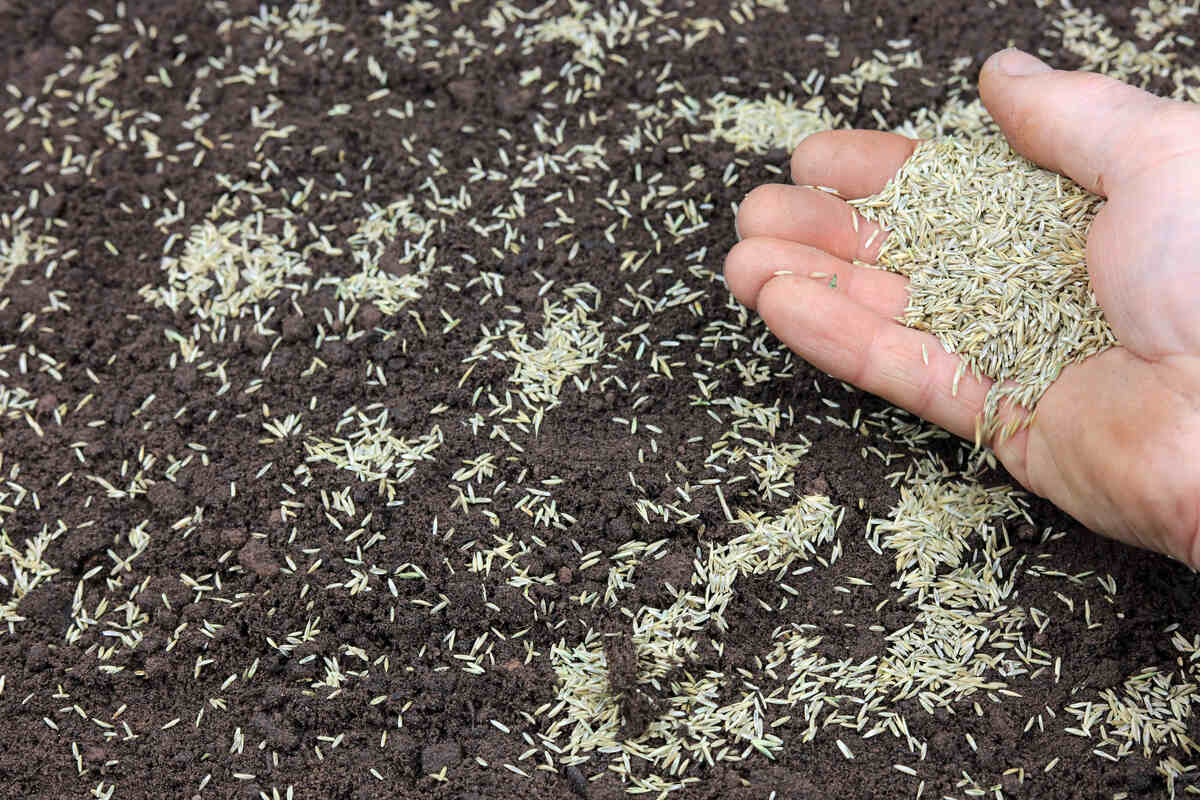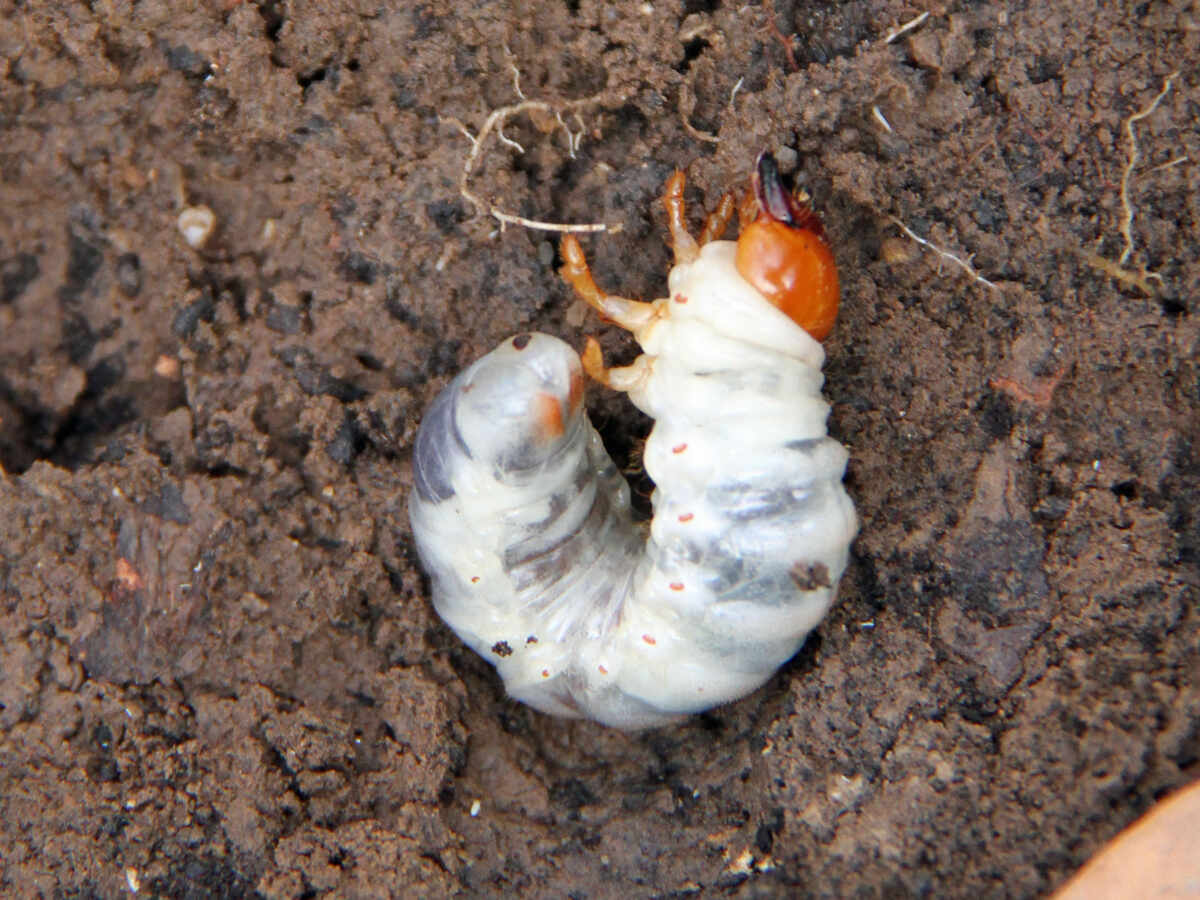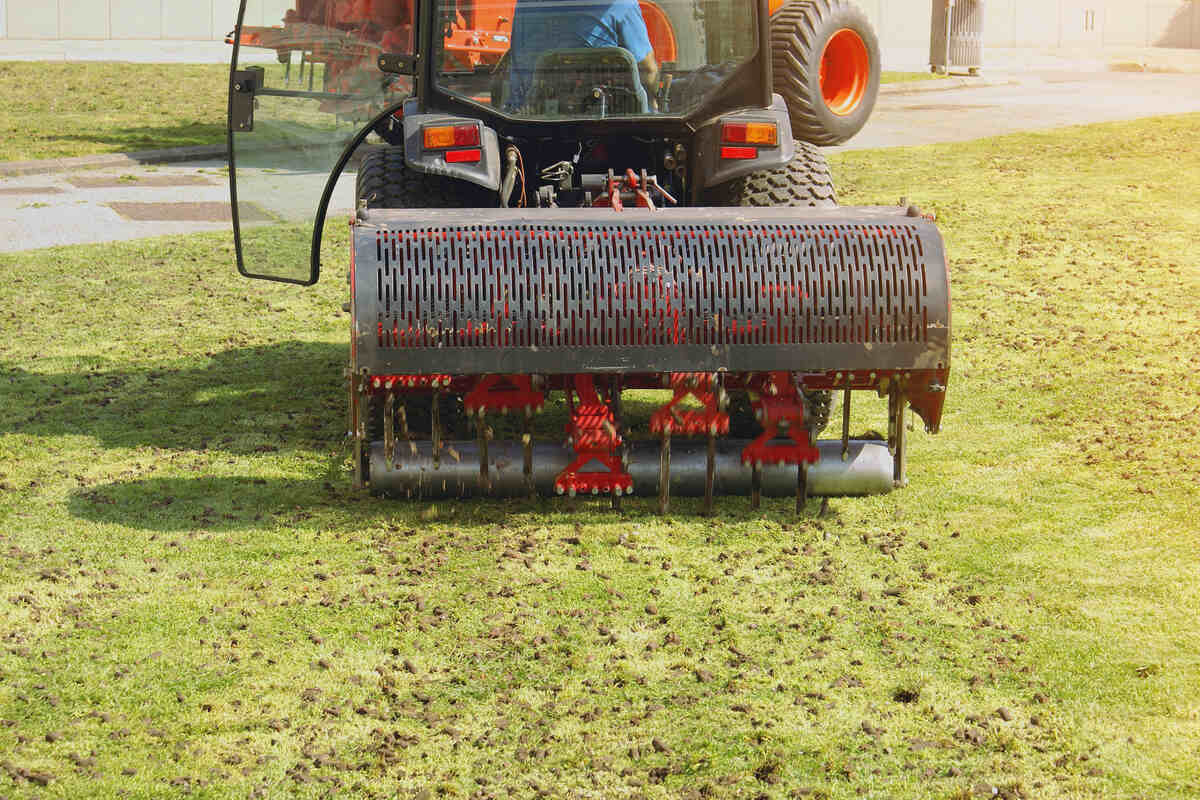
The best time to aerate your Cedar Rapids lawn is in the fall, with spring being the second-best time. These two seasons in Iowa promote the most growth and recovery for cool-season grasses.
Best Time to Aerate Your Cedar Rapids Lawn
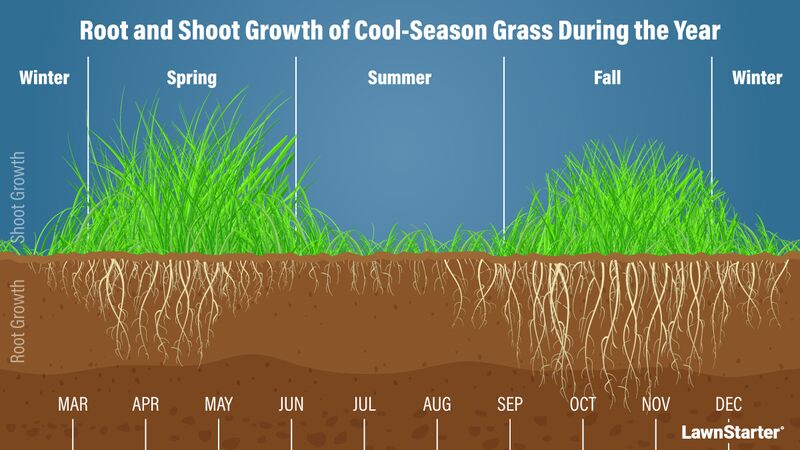
According to Iowa State University Extension, your Cedar Rapids lawn will benefit from aeration in September (early fall) or April (spring). Look for these signs to know when your cool-season lawn is ready for aeration:
Early Fall (September)
Root growth increases during the early fall season as the plant recovers from the summer’s heat. If your lawn goes dormant during the summer, it’s best to wait until the grass greens up again before aerating.
Additionally, a summer drought may have made the soil too hard to penetrate. Waiting for cooler temperatures, shorter daylight hours, and increased rainfall makes early fall ideal for aerating.
Spring (April)
When spring rolls around, a good rule of thumb is to take a “wait and see” approach. This means waiting and seeing signs of new grass (greening up) or seeing consistent growth. These are excellent indicators that the soil has probably reached 50+ degrees Fahrenheit.
Here are two signs to help you determine when your lawn is ready for aeration:
- Green grass: During fall and winter, plants tend to go dormant, and their color often changes to yellowish or brown. However, new growth emerges in spring, pushing out the dormant material, which can be mowed off. A consistently green lawn indicates that the grass has come out of dormancy and is healthy enough for aeration.
- Frequency of mowing: Another indicator is when your lawn needs to be mowed more than once a week; at this point, it can recover quickly from aeration.
When Not to Aerate Your Lawn
Don’t aerate your cool-season lawn in the summer or winter. Why? In the summer, cool-season grasses usually struggle in Cedar Rapids due to the high temperatures and soil compaction caused by heavy traffic and/or standing water. These grasses can also go dormant in the summer. If you have kids or pets who enjoy playing in the yard, your lawn will likely suffer from soil compaction.
In winter, cool-season grasses typically go dormant due to the plummeting temperatures. So, aeration isn’t recommended during this season.
Signs Your Lawn Needs Aeration
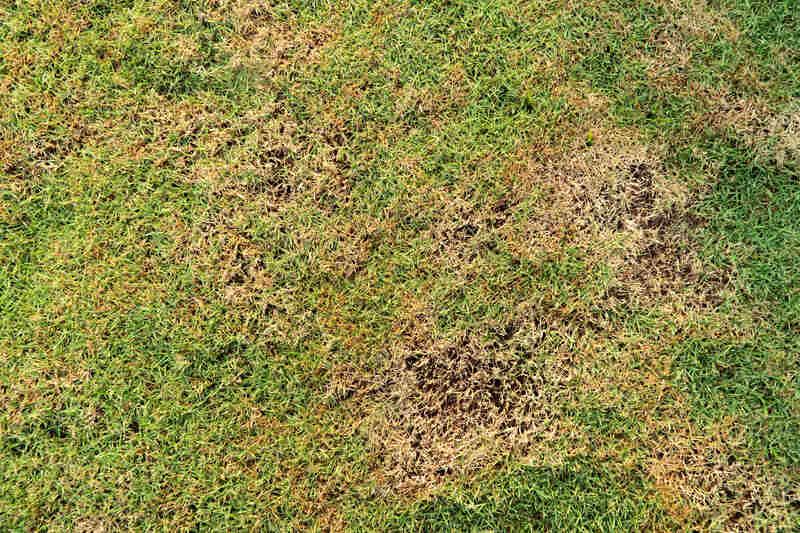
All homeowners want a lush green lawn on which they can walk barefoot to connect with nature, engage in outdoor activities, and relax. But sometimes, hot weather and compacted soil can lead to your grass dying out. That’s where aeration comes into play, acting as a renewal process to help bring your lawn back to life.
Here are some signs that indicate it’s time to aerate your lawn:
- Thinning grass: Thin grass can be caused by many factors, including compacted lawn soil. In compacted soils, the roots may not be able to grow as they should.
- Discolored areas: Yellow and brown spots could indicate that your grass lacks the proper nutrients to thrive and green up.
- Low organic matter: Low organic matter can make soil more susceptible to compression.
- Puddles on your lawn: Do you have standing water sitting on your lawn after a light rain? Poor drainage is another sign that your lawn needs to be aerated.
- Thatch: The layer of living and dead organic matter that builds up on top of the soil is called thatch. If the layer of thatch gets too thick (more than half an inch), it can prevent water, oxygen, and nutrients from reaching the roots of your grass.
- Heavy foot traffic: Kids and pets playing on your lawn can cause compacted soil.
Benefits of Aerating Your Lawn
Aerating the soil is a crucial step that is often overlooked when maintaining a healthy and beautiful lawn. Check out some of the benefits:
- Breaks up soil compaction: Soil compaction can deprive your lawn of the air and water it needs to thrive.
- Enables better air and water circulation: The grass roots can absorb more nutrients and moisture.
- Prevents thatch buildup: Thatch buildup hinders water flow and nutrients to the roots.
How to Aerate a Lawn
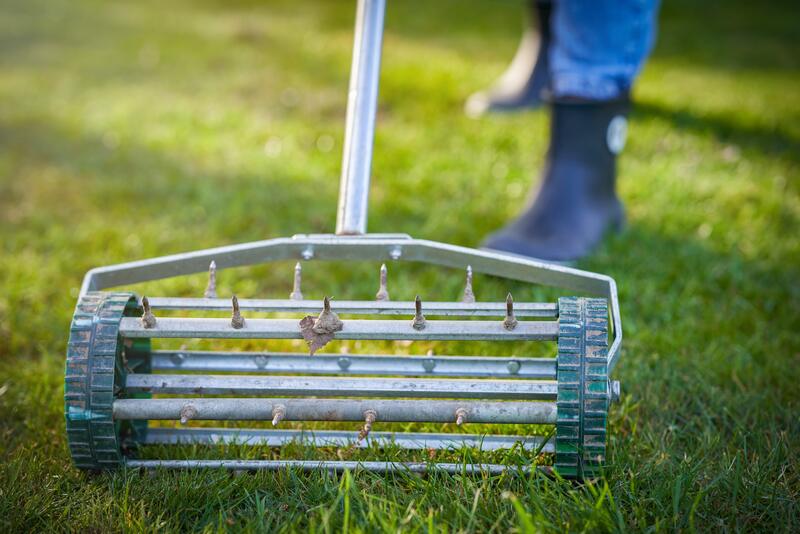
Understanding how to aerate your lawn properly is key to a gorgeous, healthy lawn. However, aerating alone won’t suffice. It’s important to use other lawn care methods along with aerating, such as testing your soil. This is especially important if you plan to overseed, as it helps determine what kind of fertilizer or soil amendments you’ll need.
As mentioned earlier, cool-season grasses in Cedar Rapids benefit from aeration in early fall (September) and spring (April). During these two seasons, your cool-season grasses can recover quickly and grow strong because aerating, specifically core aeration, can cause some initial damage.
1. Soil Test Your Iowa Lawn
The Soil Science Society of America has identified “Tama” as Iowa’s state soil. This soil type is well-drained, silt loam or silty clay loam, and appears dark grayish brown to black when moist. The combination of sand, silt, and clay particles influences the texture of the soil and determines numerous properties, such as how it feels and behaves.
To obtain specific information about the quality of your soil, you can get it tested through private or state laboratories. You may obtain a soil testing form and sample bag from your local Iowa State University (ISU) Extension and Outreach Office. The soil test form contains instructions on how to collect the sample.
Once you submit your sample, the results usually arrive in around 10 days. If you require assistance collecting a soil sample or interpreting your results, contact the ISU Extension and Outreach office in Linn County.
Note: If you’re new to lawn care, we recommend reading our article Lawn Care for Beginners. This guide covers everything from soil testing and grass types to aerating and fertilizing.
2. Dethatch
Dethatching involves removing old grass blades, roots and stems from your lawn. This process enhances airflow to the soil, which is necessary for a healthy lawn. To learn more about dethatching, check out our blog post When and How to Dethatch Your Lawn.
3. Aerate

To aerate your lawn, use a core aerator, which is a machine with hollow metal tubes that remove soil plugs. Avoid spike aeration, as this type of aerator only makes holes in the ground and can make the soil more compacted.
- When aerating, it’s important to remove soil cores about 3/4 of an inch in diameter and 3 inches long.
- It’s also crucial to do it when the soil is moist because the tubes or tines won’t be able to penetrate deeply if the soil is dry, and they might get clogged with soil if the soil is wet.
- For the best results, your lawn should have 20 to 40 holes per square foot.
Left-Over Soil Plugs
Once you’ve completed core aeration on your lawn, you may wonder what to do with the leftover soil plugs scattered across the surface. Here are two options for you to consider:
- Mow Your Lawn: Mowing is a great way to break up the cores. This will allow the soil to fall back into the holes and decompose naturally. It’s important to mow often enough to remove no more than 1/3 of the leaf blade.
- Leave them alone: You can also opt to leave the soil plugs on your lawn to disintegrate. These plugs contain microbes that help break down the thatch layer, which helps with nutrient absorption and soil composition.
4. Fertilize

The Iowa State University Extension recommends fertilizing the lawn a week before aeration and watering it after you aerate if the weather is dry to aid in its recovery. However, you can also choose to overseed and fertilize the lawn after the aeration process.
5. Compost
The Iowa State University Extension also recommends that you consider using compost as a topdressing to enhance the soil quality of your lawn. A thin layer of fine compost (around 1/4″) along with core aerating is highly recommended.
You can use a shovel to spread a thin layer of compost; then work it into the turf using a leaf rake. After that, core aerate the lawn. Then use a rake or drag mat to break up the cores and incorporate the compost.
6. Overseed
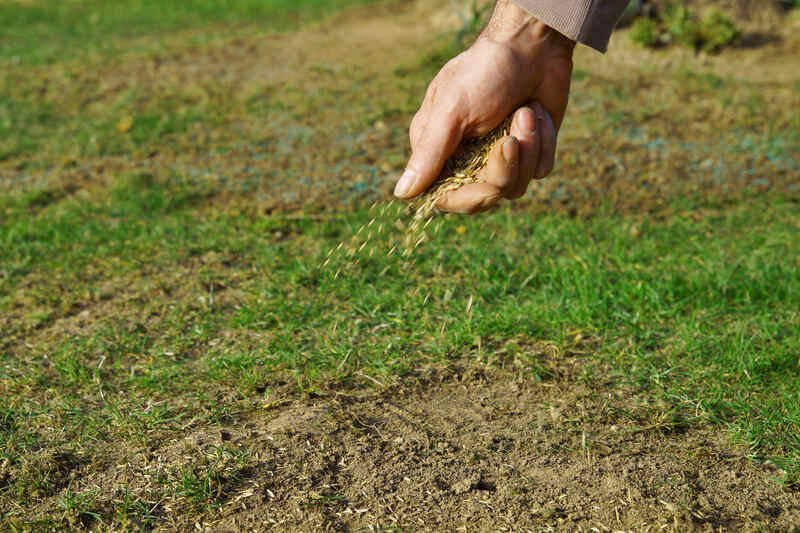
Lastly, overseed your lawn to fill in bare patches. Ensure the lawn is moist for the seeds to develop root systems. Aeration provides room for new grass seeds to grow (opens compacted soil and allows for more moisture, oxygen, and nutrients).
For a detailed guide, read our article on How to Overseed a Lawn in 8 Simple Steps to learn how to revitalize your lawn with overseeding after core aeration to increase the density of your cool-season lawn.
Note: Aeration is only the beginning. For a guide on when to perform other lawn care tasks in Iowa, see our article Lawn Care Schedule for Iowa.
How Often Should You Aerate Your Lawn?
Aerate your lawn one or two times per year. But the frequency of lawn aeration depends on the soil type, texture, and usage. For lawns experiencing heavy foot traffic, it is recommended to aerate twice a year. On the other hand, lawns established on well-drained soils and experiencing little traffic can be aerated once a year, which is usually sufficient.
FAQ
What is the Best Time to Seed a Lawn in Cedar Rapids?
For optimal results, the best time to plant grass seed in Cedar Rapids is in late summer, with August 15 being the target date. Seeding can be done until the end of September, but after October 1st, the chance of success decreases each day.
Note: If you need more information about grass seed for your Iowa lawn, our article Best Grass Seed for Iowa Lawns is worth checking out.
Does Aeration Help Keep Grubs Away From Your Lawn?
Yes, aeration can certainly help keep grubs away from Cedar Rapids lawns. The beetles that lay grubs prefer compacted soil for their eggs. Aeration helps to loosen the soil and create a more hospitable environment for beneficial insects that prey on the grubs. By aerating your soil regularly, you can improve the health of your lawn and reduce the risk of grub infestations.
How Can I Test My Lawn to Know if the Soil is Compacted?
Do the screwdriver test. This method involves inserting a screwdriver or a pencil into the ground and observing if it goes smoothly or with difficulty. If the object encounters resistance, it could indicate soil compaction, and it may be advisable to seek the help of professionals to aerate your lawn.
Is it Possible to DIY Your Lawn Aeration?
Yes, you can rent a core aerator from a rental agency or home improvement store and DIY the aeration yourself. If this seems like too much trouble, or you don’t have a way to transport an aerator to and from the store, hire a lawn care company to do it for you.
Call In The Pros
If you’re a diehard DIY warrior, renting an aerator to work on your lawn can be a great option. However, if you prefer to avoid the hassles of figuring out the best time and method to aerate your lawn, LawnStarter can connect you with the top-rated lawn care professionals in your area. Once connected with them, you can head to Bever Park to enjoy some fresh air.
Main Image Credit: Shutterstock
